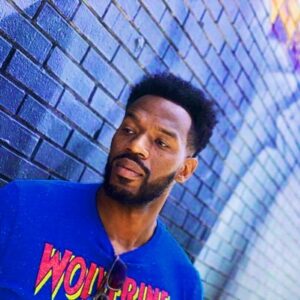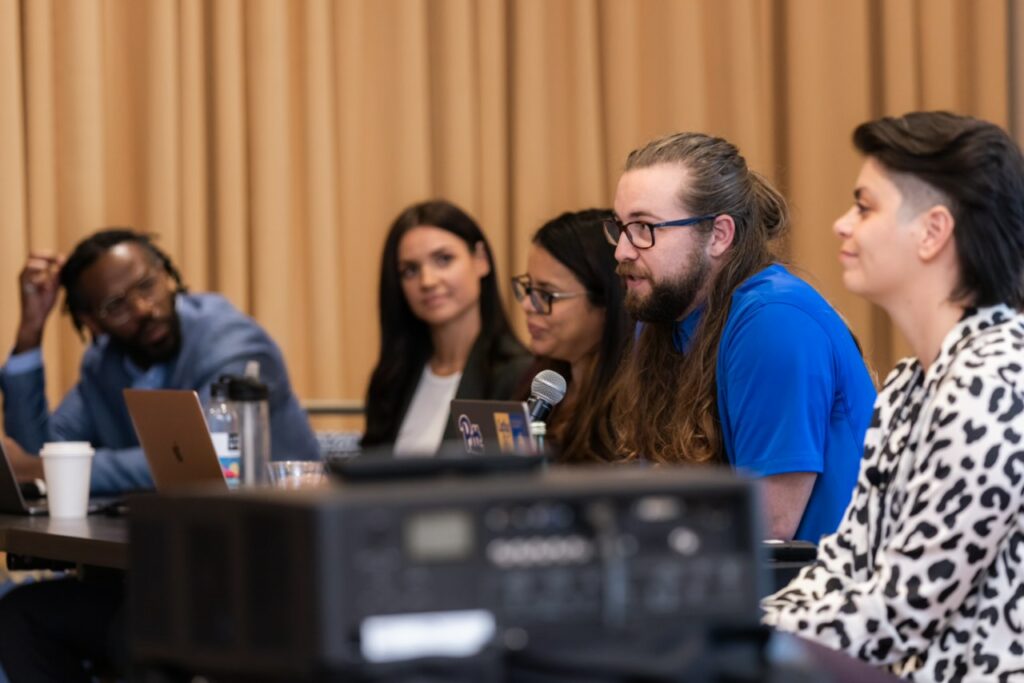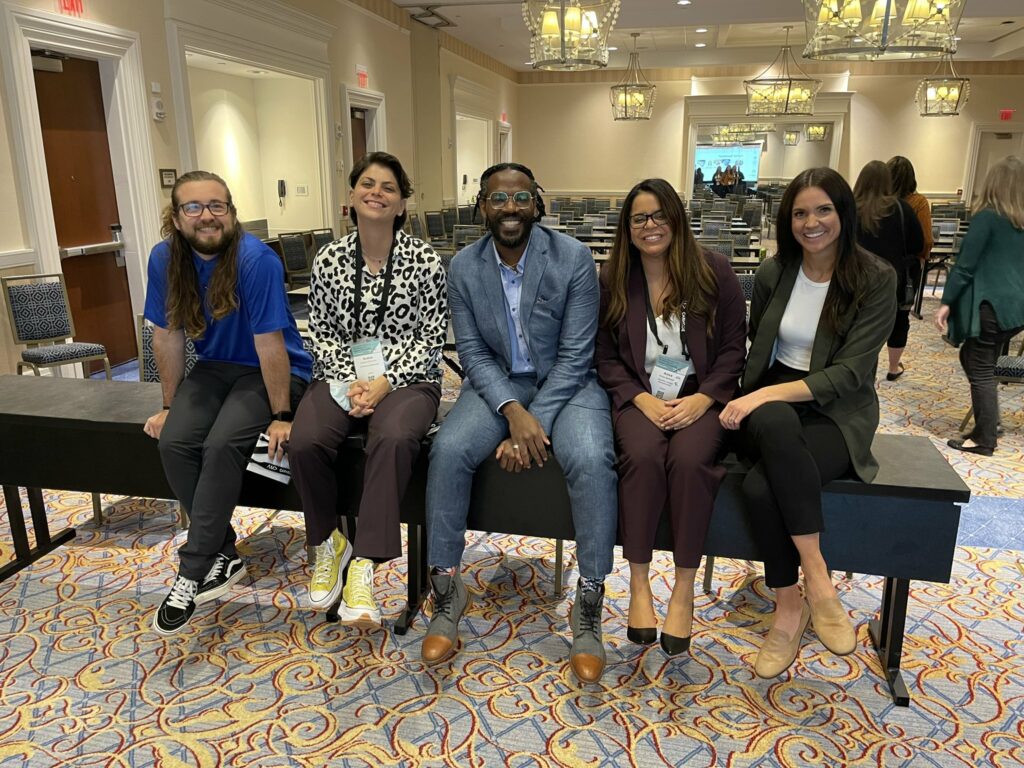Last month, I attended the American Marketing Association’s Symposium for the Marketing of Higher Education. While the symposium encompassed all areas of marketing and communication in higher ed, there were some good social media takeaways I thought I could share with my social media friends (aka, you!).
Takeaway 1: Student content creators should be part of your social strategy. And leadership should support it.
I was invited to co-host a workshop at the symposium with some of the coolest social media pros in higher education: Anice Rodrigues Barbosa (Wheaton College), Yasin Id-Deen (UC Berkeley), Alex Mowrey (University of Pittsburgh) and Acacia O’Connor (University of Pittsburgh).
Our workshop was all about social content curated by students, why it matters and how to do it. We talked about everything: how to get support from leadership to fund student co-creators, how to onboard them, content creation, caring for our students, and more.
Each of us come from different universities in different parts of the country with different approaches to managing student co-creators. But, the one thing that was unanimous for us all was that incorporating students into our social media strategy works.
Beautiful campus shots and winning athletics posts aren’t cutting it anymore now that students live on people-centered platforms that prioritize authenticity, like YouTube and TikTok. But as we all know, you need funds to hire student interns, which requires support from leadership.
We have 11 student co-creators on our team, and we know how fortunate we are. The reason we have this internship program is all because of Kimberly Stern, our executive director of social and digital media, and her successful efforts in getting funding to hire our students. In preparation for the workshop, I talked to Kimberly, and here were some of her thoughts about advocating to leadership for an internship program:
- It’s a long-term commitment to seek resources. “It doesn’t happen overnight, at least for me it doesn’t. You have to build a case for why more resources are needed, and bring it up at every meeting you have with your supervisor.”
- We wanted to launch an entire new platform and it needed to be fed. “For our vlog and TikTok teams, we did our research. It’s not the millennials that are creating the successful content, it’s the students themselves. We needed to hire students to reach students where they are on social media now.”
- TikTok and the YouTube vlog are very prospective student-forward, and that is important to senior leadership. “It’s important for senior leadership to understand how the social media team is helping recruitment and enrollment, and through these platforms, we are doing that.”
- We show proof of what we have we gained by hiring these students. “We can see outcomes through views and testimonials from vlogs. We can see it through our TikTok analytics. We show that we’re making good on the resources the university has provided.”
- We work at a university and want to support students. “One of the pillars of student success during a student’s college career is having a job on campus. If we’re being part of that environment and providing job and learning opportunities for our students, that’s great. It’s harder to take the leap to advocate for full-time employees. The investment and resources for that person are so much more.”
- Not investing in students is almost a bigger risk “…because your content is not going to be as good in some cases. There are the roles where students can succeed and shine, and there are the roles and responsibilities that require full-time staff in order to really have a top-notch shop.”
- Be candid with your supervisor about burnout and capacity issues. Advocate for yourself. “Make a pitch and proposal for why you need help. A factor of why you need help is for your own mental health as an engaged employee. There’s a lot of merit in that being a driver – taking care of ourselves. The pandemic has shown that employees have more empowerment to speak up and make the work environment a productive and healthy one. You have to have ongoing dialogue with supervisor. You have to bring it up time and time again. Be persistent. If it’s not part of your regular communication with your supervisor, then how are they going to know if things are problematic?”
Anice, Yasin, Alex and Acacia are all brilliant and have built powerhouse teams, which include student interns. Follow them on Twitter!




The topping on the cake for our social media workshop was that BeReal did, in fact, go off.
https://twitter.com/TweetsByAcacia/status/1589374592271126528
Takeaway 2: We’re all in the same boat. Everyone is trying to differentiate themselves.
One topic that came up time and time again in presentations was how universities can differentiate themselves. For the most part, we’re all pretty much trying to sell the same product to the same audience. So, how do we help our universities stand out?
Well, we haven’t been doing a great job at it.
One of my favorite presentations featured the Hershey company and Purdue. Ryan Riess and Kristen Riggs from Hershey talked about the inspiration behind the Reese’s University ad campaign and shared “why it was so easy to mimic collegiate marketing in a way that made us both laugh and cringe.”
It’s the “Are you RU” for me.
After Hershey left us laughing and cringing, too, R. Ethan Braden from Purdue shared a small case study on how they set out to differentiate themselves. He said higher education might be the single most difficult category in which to achieve true differentiation. It’s something we all struggle with.
He urged everyone to focus on distinction over differentiation, and said how well a brand is accepted externally is based on how well it’s understood internally.
What makes your university truly distinct over all the rest? Own that, double down on it, and make it who you are.
Purdue did that. Here’s one of the brand videos that came from their work:
Takeaway #3: Authenticity and personalized marketing are more important than ever
Authenticity. It’s something we’ve been hearing about more and more in the social media world. (Dare I say we need to BeReal?) So, it’s no surprise this was another theme I heard brought up throughout the symposium.
Did you know high school students are applying to an average of 12-15 colleges? I didn’t. It was pretty eye opening. The University of Pittsburgh shared how they have increased their admissions yield through personalized marketing and authenticity. Here was their tip:
Build a highly-segmented, multi-tactic, omni-channel yield marketing and communications campaign. “Talk to different segments of you students on a platform they want to interact with you on and in a way that resonates with them.”
This included everything from an AR map prospective students could use to tour campus to mailing boxes of goodies to admitted students to handwritten notes from faculty and more.
As we know, Gen Z is all about authenticity and individualization, and they expect that from brands that are marketing to them, too.
Takeaway #4: Generation Alpha is about to be teenagers
The oldest kids in Gen Alpha (kids born between 2010 and 2024) are going to be in high school soon. That’s it. That’s the takeaway. Hope you feel as old as I do.
Wrapping up
There were so many great takeaways from the symposium, too many to include in a blog. But I hope if you weren’t able to attend, you found this helpful! Until next time, friends.

